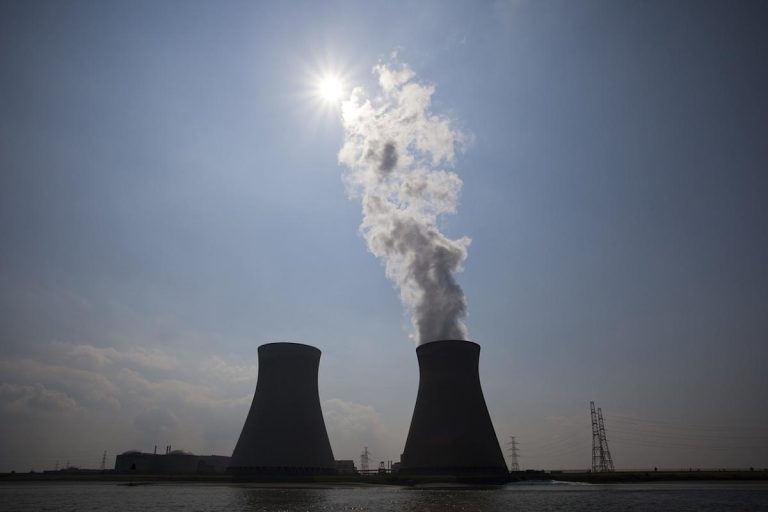US hiring likely remained healthy last month and the unemployment rate held steady at a historically low level, pointing to a stable labor market ahead of an expected tariff-induced economic slowdown later this year.
![4gr]0bebk80kf6[l3pifobf4_media_dl_1.png](https://smartcdn.gprod.postmedia.digital/financialpost/wp-content/uploads/2025/04/economists-see-healthy-us-payroll-gains-in-march.jpg?quality=90&strip=all&w=288&h=216&sig=ROIV74vGV3yvI45Wgm0i4w)
Article content
(Bloomberg) — US hiring likely remained healthy last month and the unemployment rate held steady at a historically low level, pointing to a stable labor market ahead of an expected tariff-induced economic slowdown later this year.
Article content
Article content
Nonfarm payroll growth probably decelerated to 140,000 in March after a 151,000 advance in the prior month, according to the median estimate in a Bloomberg survey of economists. The joblessness rate is seen unchanged at 4.1%.
Advertisement 2
Article content
The report will provide a snapshot of labor demand before the across-the-board tariffs President Donald Trump announced this week. Even before the new levies, some employers had put hiring and investment plans on ice until they get a better sense of what the outlook for their business will be like in coming months.
“The employment impacts may start slowly but we would expect them to build following the upstream reaction to firms realizing slower consumer spending, on top of the weaker business fixed investment,” UBS economists led by Jonathan Pingle wrote in a note.
Government Cuts
Forecasters are anticipating a drop in government payrolls. But the March decline is expected to be relatively small — around 15,000 to 25,000 — with the brunt of the impact from the government’s actions to shrink the federal workforce expected later this year.
“We expect a 15,000 drop in federal employment, reflecting reduced new hiring and layoffs of probationary workers,” Andrew Husby, senior economist at BNP Paribas, wrote in a note. However, some fired workers have been reinstated or placed in administrative leave following court challenges, so even as he anticipates federal-government payrolls to drop by 125,000 this year, Husby sees “high uncertainty around this number.”
Article content
Advertisement 3
Article content
Retail, Health Care
The end of two strikes in March, at grocery retailer Kroger Co. and Providence Health, are seen boosting payrolls by some 15,000 returning workers in retail and health.
Health care has long been a driver of job creation. In March again, the sector is expected to be one the main growth engines after accounting for more than a third of payroll gains in February.
“Health care hiring remains the standout as demographic forces, including an aging population, means demand in the sector ought not slow due to cyclical forces,” Carrie Freestone, an economist at the Royal Bank of Canada, wrote in a note.
What Bloomberg Economics Says…
“Bloomberg Economics expects solid nonfarm payroll gains in March, but they’ll be overshadowed by a rise in the unemployment rate. We think the strength in the Bureau of Labor Statistics’ establishment survey will be driven by factors that are just temporary: a rebound from winter storms, resumption of government grant payments the Trump administration had tried to freeze, and front-running of tariffs.”
—Anna Wong, Estelle Ou and Chris G. Collins
Advertisement 4
Article content
To read the full note, click here
Jobs Outlook
Economists are expecting a higher unemployment rate this year and increased odds of a recession as a result of Trump’s major tariffs on global trading partners. Companies from Nike Inc. to Target Co. have warned of higher prices ahead because of levies, which could eventually lead to a slowdown in consumer spending. To protect margins, employers may opt to reduce their workforce.
“The much higher-than-expected tariff rates are likely to at least temporarily cause firms to pull back on hiring and investment while consumer facing higher prices will slow spending,” Citigroup Inc. economists led by Andrew Hollenhorst wrote in a note. “Even if tariffs are significantly reduced in coming months, the extended period of uncertainty will at least temporarily slow activity.”
The March jobs report is unlikely to show a breaking labor market, High Frequency Economics economists Carl Weinberg and Mary Chen wrote. “But that is no assurance that a sharp rise in unemployment and a drop in payrolls will not follow yesterday’s tariff announcements. Beware April,” they added.
—With assistance from Chris Middleton.
Article content






